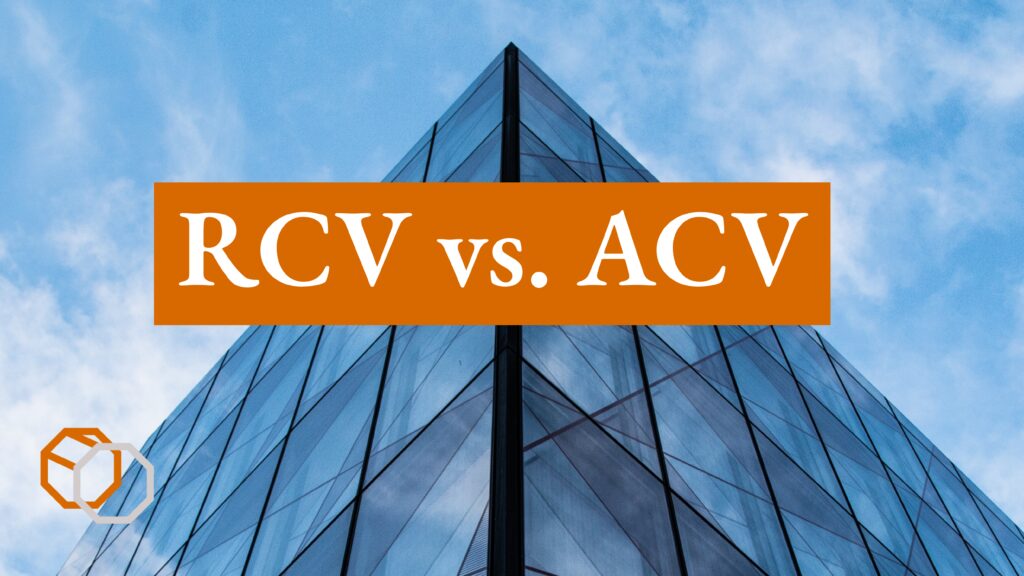RCV vs. ACV: Understanding the Difference in Insurance Claims

When policyholders file an insurance claim, one of the most important aspects they must understand is how their payout will be calculated. Two key terms in the insurance world—Replacement Cost Value (RCV) and Actual Cash Value (ACV)—can make a significant difference in the amount a claimant receives. As a Public Adjuster and Consultant, I often see confusion around these terms, which can lead to frustration and financial setbacks for policyholders. Let’s break them down.
Replacement Cost Value (RCV)
RCV is the cost to replace damaged or lost property with a new item of similar kind and quality—without factoring in depreciation. This means the insurance company pays what it would cost today to replace the item, ensuring the policyholder can restore their property to its pre-loss condition.
How RCV Payouts Work:
- Initial ACV Payment – After a claim is filed, the insurer typically issues an ACV payment first (more on this below).
- Depreciation Holdback – The insurer holds back the depreciation amount until repairs or replacements are completed.
- Final RCV Payment – Once the policyholder submits proof of completed repairs or replacement, the insurer releases the remaining funds.
Example: If a roof costs $20,000 to replace and has $5,000 in depreciation, the insurer might issue an initial payment of $15,000 (ACV). The remaining $5,000 is reimbursed once the roof is replaced.
Actual Cash Value (ACV)
ACV is the replacement cost minus depreciation, meaning the policyholder receives a payout based on the item’s current value, considering age, wear and tear, and obsolescence.
How ACV Payouts Work:
- The insurance company calculates the depreciation of the item.
- The policyholder receives a reduced payout, reflecting the item’s diminished value over time.
- There is no additional reimbursement for depreciation, unlike RCV policies.
Example: If a 10-year-old roof costs $20,000 to replace but has $12,000 in depreciation, the policyholder will only receive $8,000 under an ACV policy—often leaving them with a significant out-of-pocket expense.
Which Coverage is Better?
- RCV policies offer better protection because they cover full replacement costs, ensuring policyholders can repair or replace damaged property without significant financial strain.
- ACV policies are typically cheaper but may leave homeowners or businesses struggling to cover repair costs due to depreciation deductions.
Why This Matters to Policyholders
As a Public Adjuster and Consultant, I always advise policy holders to review their policies before a loss occurs. Many only realize they have ACV coverage when they receive a lower-than-expected payout. Understanding the difference between RCV and ACV can help policyholders make informed decisions about their coverage and financial preparedness.
There are a few caveats to the above information, but for simplicity’s sake I’ve tried to explain the main difference between RCV and ACV. If you have questions about your policy or a recent claim, feel free to reach out. A public adjuster can help ensure you get an optimal payout!
Randy Thompson, MBA
Commercial Claims Expert | Expert Damage Consulting | Appraisals | Public Insurance Adjuster | Founder & CEO of Building Damage Consultants | Licensed in 19 States
